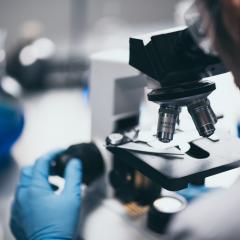A University of Queensland researcher says his prestigious international award for a lifetime of hypersonic research highlights UQ’s success in finding a niche in a global field.
Centre for Hypersonics director Professor Richard Morgan has received the American Institute of Aeronautics and Astronautics’ 2017 Hypersonic Systems and Technologies Award.
The award to the School of Mechanical and Mining Engineering academic recognises sustained, outstanding contributions and achievements in the advancement of atmospheric, hypersonic flight and related technologies.
Professor Morgan received the honour for his work in the development of very high-speed wind tunnels for the laboratory study of hypersonic flows.
He is just the fourth researcher and the only person outside the United States to receive the AIAA award.
“I am proud to share this achievement with my extended group of colleagues, technicians and students, past and present,” said Professor Morgan.
“I also thank the wonderfully supportive administrators at all levels who have put up with our activities for so many years – even when we were making explosive propellants in the laboratory under the former Executive Dean’s office.”
Professor Morgan said UQ could be proud that its hypersonics team had found success in a global field that had a very small domestic commercial base.
“It’s important also to acknowledge the contributions of the Australian Research Council, which continues to support work based on academic merit without the guarantee of short-term returns,” he said.
Head of UQ’s School of Mechanical and Mining Engineering Professor Ross McAree said the AIAA award was an impressive achievement and demonstrated Professor Morgan’s lifetime of commitment to hypersonic research and a dedication to sharing that knowledge with eager students.
“Richard is an accomplished researcher and teacher, lecturing in mechanical and aerospace engineering,” said Professor McAree.
“Through his passion for his field, he presents aerospace industry careers as real possibilities for a new generation of young innovators.”
The UQ Centre of Hypersonics research program is based around the facilities and equipment developed in-house at UQ in the late 1980s by a space engineering and hypersonics pioneer and Australia’s first professor of space engineering, Professor Ray Stalker, along with Professor Morgan and colleagues.
It includes projects like the “X”-series of super-orbital expansion tubes (pictured).
More scramjet tests are now undertaken at UQ’s facilities than anywhere else in the world.
“We have a unique collection of ground-testing facilities which are highly sought after by collaborators internationally,” Professor Morgan said.
The Centre for Hypersonics will celebrate 20 years of operation this year after its joint establishment between the disciplines of mechanical engineering and physics in 1997.
The centre is a globally recognised research leader in hypersonics and has many active collaborations with international universities and research groups including NASA, the European Space Agency, the Asian Office of Aerospace Research and Development, the University of Oxford and École Centrale Paris.
The AIAA award winners were honoured at a dinner this month at the 21st AIAA International Space Planes and Hypersonic Systems and Technology Conference (Hypersonics 2017) at the University of Xiamen, China.
Media: Genevieve Worrell, EAIT Faculty Media and Communications Coordinator, g.worrell@uq.edu.au, 0408 432 213.



